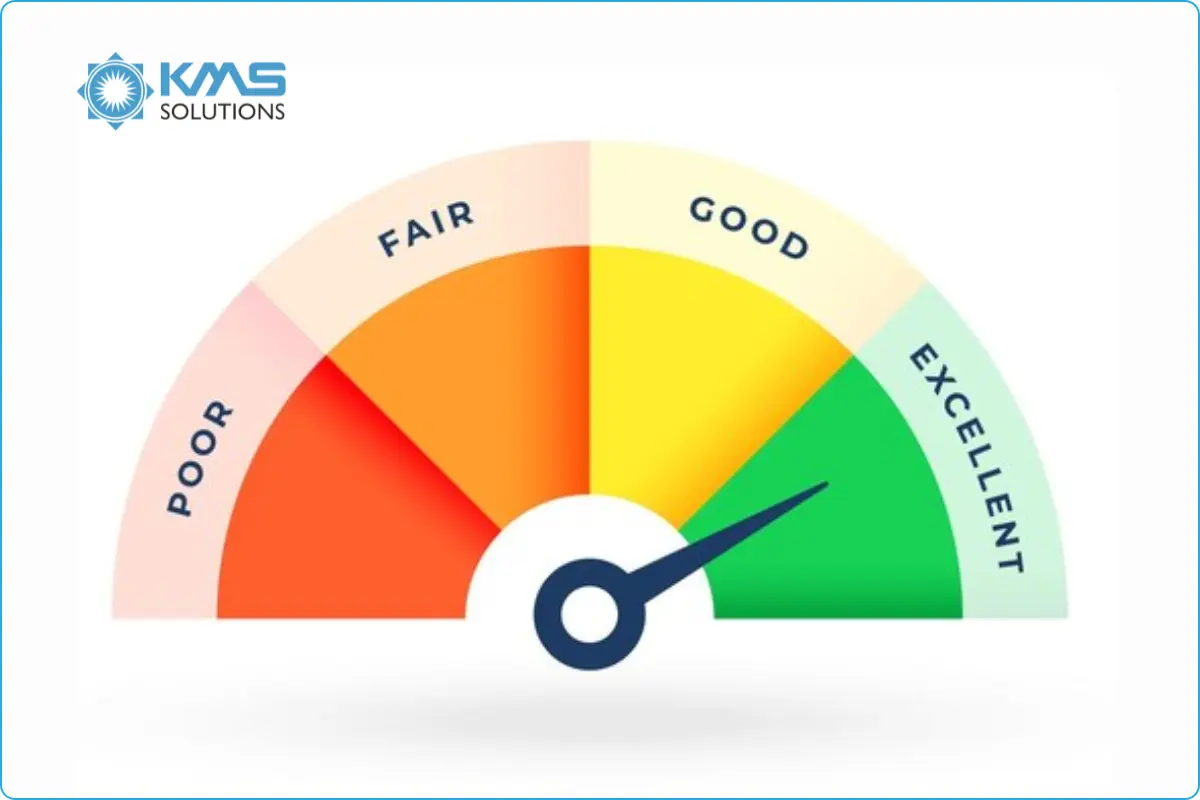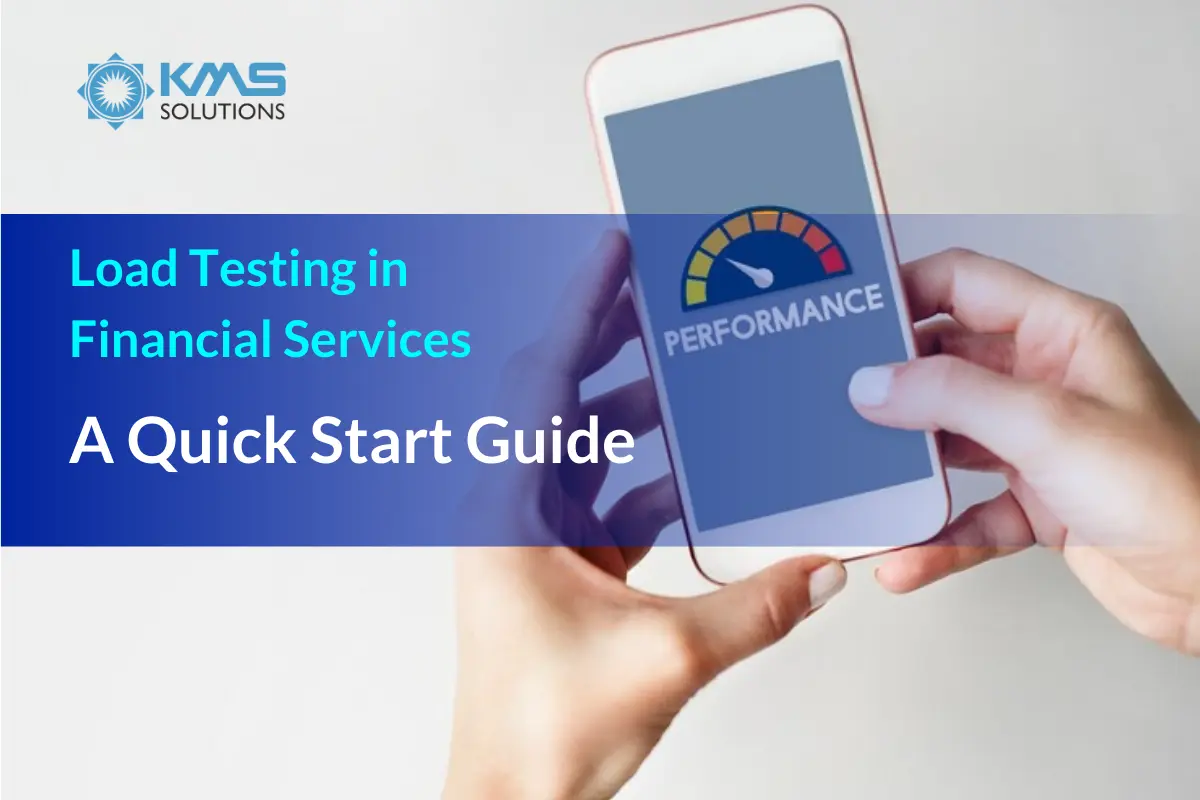In the fast-paced realm of financial services, where the demand for seamless transactions and uninterrupted services is paramount, the specter of system crashes looms large. Imagine the dismay when users log in to your financial app only to encounter a crashing system, triggering a cascade of complaints and negative reviews.
This is precisely the scenario that financial institutions strive to avoid when developing products that cater to large audiences and need to scale as the load increases.
Hence, load testing holds significant importance for companies operating in payment gateways, online banking, investment platforms, digital wallets, and other financial services.
This article aims to provide a comprehensive understanding of this type of testing and insights into the best practices for conducting it.
1. What is Load Testing for Financial Services?
Financial services load testing is a kind of performance testing that assesses a system’s ability to manage a certain load, usually a high amount of user requests, transactions, or data processing operations, under varied circumstances. Especially during periods of high usage, this procedure is essential to guaranteeing that financial applications can run effectively, dependably, and securely.
2. Why is Load Testing for Financial Apps Important?
Financial firms operate in a fiercely competitive landscape governed by stringent regulations. They encounter numerous hurdles, including complex transaction processing, swiftly evolving customer demands, security prerequisites, and regulatory adherence.
Performance problems, like sluggish response times, system failures, and timeouts, can result in customer dissatisfaction, revenue loss, and harm to brand reputation.
Load testing plays a pivotal role in addressing these challenges by uncovering critical issues such as bandwidth constraints and load distribution issues. It enables fintech enterprises to ensure their systems are equipped to handle anticipated loads, deliver optimal performance, and furnish customers with a secure and compliant environment.
3. Load Testing vs. Stress Testing
Although load testing and stress testing are both performance testing methods used to assess how applications behave under various circumstances, they have different objectives and approaches.

Load testing determines how a system performs under expected load conditions, assessing its capacity to handle normal and peak user traffic. It guarantees that the function you are testing is capable of supporting the load for which it was intended. By overloading your website or application until it malfunctions or crashes, stress testing identifies how it acts outside of typical and ideal circumstances.
While stress testing evaluates how a system behaves under extreme conditions beyond its designed capacity to identify breaking points and potential failures.
Besides, the purpose of load testing is to evaluate user activities that you could experience on a daily basis under typical circumstances. While examining the results of load testing enables you to optimize your website or application to guarantee a strong digital performance, examining the results of stress testing enables you to be ready for the unexpected.
4. How Does Load testing Work?
Using specialized testing software, load testing applies a simulated “load” or demand to your application to verify its stability during operation. Throughout a load test, the testing software assesses the capacity of your product by monitoring transaction response times. If your application experiences prolonged response times or instability at a particular level of simulated traffic, it indicates that your software may have reached its maximum operating capacity. This highlights the need to address and implement a solution to this software bottleneck.
Load testing allows development teams to efficiently gauge and assess aspects such as:
- Throughput rates, particularly those necessary to sustain peak load scenarios.
- Levels of resource utilization.
- Performance of hardware environments, including CPU and RAM.
- Load balancer efficiency.
- Concurrency challenges.
- Software functionality discrepancies under varying load levels.
- Design flaws
- Number of users the product can manage before breaking
5. How Do You Perform a Load Test for Mobile Financial Apps?
Here, we’ll outline the steps you need to take to seamlessly integrate load testing into your performance testing initiatives:
Step 1: Identify requirements
To kickstart the load testing procedure, prioritize pinpointing the expected scope and scale of your financial application. Determine which aspects needed to be tested during production, including user journeys, response times, environment configurations, expected SLA values, resource usage metrics, and peak user capacity. This initial step lays the groundwork for establishing precise guidelines to guide the testing phase.
Step 2: Develop Test Scripts
Next, the testing team builds scripts that outline relevant user journeys. Additionally, they establish the requisite test data and environments to execute the tests. Currently, enterprises are utilizing various load-testing tools during this phase. Opt for a load testing tool that offers user-friendly operation and scalability, delivers accurate results, and integrates smoothly with other tools used across your organization.
Step 3: Conduct Load Tests
Load tests are executed within either a production environment or a simulated production environment. In a load test with user loads, the performance engineering team incrementally escalates the load generated using a load generator. They then closely monitor various metrics, including:
- Error rates
- Response times
- Throughput
This collaborative endeavor engages development, database, networking, and other testing teams. During this phase, the team monitors logs, dashboards, and other monitoring resources.
Step 4: Analyze Results
Upon completion of the execution phase, the load gradually returns to its normal state. Subsequently, the performance team collects the automatically generated results from the load testing tool and shares their observations, recommendations, and decisions with the engineering team for further evaluation.
Step 5: Re-execute Tests
In the event of a test failure, the team investigates the related user journeys to identify the root cause and address the specific issue. Afterward, they conduct another load test to confirm that their resolution has enhanced the application’s performance.
6. Load Testing Tools for Financial Services
You want financial services load testing solutions that can manage large transaction volumes, guarantee system stability, and adhere to legal standards. These are a few commonly used tools in the field.

6.1. Katalon
This tool allows users to create automated tests for web, mobile, and API applications. Its scriptless interface makes it accessible for non-programmers. Katalon is a robust tool for functional and regression testing, but for comprehensive load testing, consider using it in conjunction with specialized performance testing tools.
6.2. Apache Jmeter
It is used to measure the load and functionality of web applications as well as conduct performance tests. It mimics numerous users submitting queries to a web server, examines the server’s response, and calculates performance indicators including resource usage, throughput, and response time.
6.3. WebLoad
The purpose of the WebLoad performance testing tool is to measure how web applications behave under different circumstances by simulating user load. It assists in locating performance snags and guarantees that web apps can manage anticipated traffic.
6.4. NeoLoad
It is a tool for performance testing that simulates user traffic and assesses how effectively programs manage stress and strain. By creating virtual users to evaluate the scalability and dependability of the program, it assists in locating bottlenecks and performance problems.
6.5. Load Ninja
With the help of this cloud-based performance testing tool, users may mimic actual user loads on their apps. By conducting load testing in real-time, it gives teams comprehensive insights into the scalability and performance of applications, assisting them in locating and resolving performance bottlenecks.
6.6. HP Performance Tester (Micro Focus LoadRunner)
This performance testing tool simulates virtual users to assess an application’s ability to manage different loads. By placing a load on the program and examining its reaction times and behavior under pressure, it assists in locating performance bottlenecks.
6.7. LoadUI Pro
This is a commercial load testing tool which is created to evaluate the scalability and performance of web apps and APIs. To make sure apps can withstand real-world usage, users may monitor system activity, discover performance bottlenecks, and simulate different load conditions.
6.8. LoadView
LoadView is a cloud-based performance testing tool that mimics heavy website and application traffic and demand. By creating actual user interactions and examining the effects on performance, it assists in determining how a website functions under different circumstances.
7. Metrics of Load Testing
Load testing involves evaluating how a system performs under varying levels of demand. By analyzing these metrics, you can gain insights into the system’s performance, identify bottlenecks, and ensure that the application can handle the expected user load efficiently. Here are some key metrics to consider during load testing.

7.1. Response Time
Calculates how long it takes a system to react to a user’s request in total. Since it guarantees that systems are responsive and fulfilling user expectations, it is among the most important indicators. Response time can be divided into four subcategories: Minimum response time, Maximum response time, Average response time and 90th Percentile.
7.2. Error Rate
It is also called an error percentage. Error rate shows the proportion of unsuccessful requests relative to all requests. When encountering excessive error rates under load, this may be a sign of infrastructure or application problems. The error rate can be calculated as below:
Error Rate = (Number of failed requests / Total number of requests) x 100
7.3. Throughput
This metric is used to determine the range of bandwidth utilized when load routines or tests are running. It is also used to determine how much data is being used to verify the requests that are sent back and forth between the user server and the application main server. It is usually expressed in requests per second (RPS) or transactions per second (TPS).
Throughput = Total no. of requests/ Total time taken
7.4. Requests Per Second
It indicates the number of requests that are sent to the application server every second. The requests may be for documents, photos, articles, web pages, or any other type of resource.
7.5. Concurrent Users
It measures the number of users who visit the application present at any one time without submitting any requests. This makes it simple to determine when a large number of users are accessing the website or application.
7.6. Peak Load Capacity
Peak Response Time calculates how long it takes to process a request. Additionally, it assists in determining the length of the peak time (longest time) during which the cycle of requests and responses is handled as well as which resource is taking the longest to answer to the request.
7.7. Database Performance
Database performance metrics ensure that the database operates efficiently, meets user demands, and maintains the overall health of applications that rely on it. By focusing on these objectives, organizations can maintain high-performing databases that effectively support their applications and business goals.
8. Load Testing Best Practices in Fintech Domain
To make sure your financial services apps can manage anticipated user traffic without experiencing performance issues, load testing is crucial. When performing load testing, please follow some best practices as below.
8.1. Consider the End-user Experience Every Step of the Way
Considering the end-user experience throughout the load testing process is crucial for ensuring that applications perform well under real-world conditions. This can help organizations ensure that their applications not only perform well under load on browsers and mobile devices but also meet and exceed user expectations. This holistic approach ultimately leads to higher user satisfaction and better overall performance.

8.2. Establish Realistic Benchmarks and Scenarios
For load testing to be effective, realistic benchmarks and scenarios must be established. You can gain a better understanding of how your application functions or might function in real-world scenarios with actual users by developing realistic load testing.
Consider randomization and variability when determining the actions to be taken in your testing because real users can be somewhat unpredictable. To ensure that your application is prepared for deployment, switch up the device and browser type.
8.3. Run Load Tests Early and Regularly
Maintaining application performance and guaranteeing a satisfying user experience need early and frequent load testing. Before performance testing used to usually be completed at the conclusion of a development project.
However, in order to identify and address problems as soon as possible, it is crucial to begin the feedback loop early in the software development lifecycle. Make performance testing, and load testing in particular, a top priority for your CI/CD and agile processes.
You may detect performance problems before they impact users, continuously improve application performance, and make sure your application satisfies real-world usage requirements by doing load testing on a regular basis. In the end, this proactive strategy results in a more dependable and fulfilling user experience.
8.4. Analyze Test Data to Unearth Underlying Problems
The first obvious step after conducting your load tests is to pinpoint any issue areas and implement the best course of action to enhance that component’s performance. This entails linking code to performance bottlenecks in order to identify the issue’s underlying cause.
You can successfully identify underlying issues and enhance application performance and user experience by carefully examining test data and following these procedures. This methodical technique guarantees that you base your decisions on insights gleaned from data.
9. Challenges of Load Testing in Financial Services
Here are some of the challenges you might face:
9.1. Variety of Platforms
Fintech applications can span across web interfaces, mobile apps, and backend systems. Testing tools need to be platform-independent to simulate user behavior across different environments effectively.
9.2. Data Sensitivity
Financial institutions deal with highly sensitive financial data. Creating realistic test data while adhering to security and privacy regulations requires extra attention.
9.3. Complexity
Fintech systems often involve intricate transaction processing with multiple interconnected components. Accurately simulating real-world user behavior and data flow during load testing can be difficult.
10. Seamless Load Testing with KMS Solutions
Amidst the imperative for seamless customer experiences as a key differentiator in financial services, load testing emerges as a critical aspect for ensuring the reliability of digital solutions and upholding customer satisfaction.
However, the nature of data sensitivity, complexity systems, and diverse platforms in financial services pose significant challenges that impact the load-testing efforts. To surmount these hurdles, organizations require skilled testers capable of implementing effective strategies and best practices.
With a wealth of experience in revolutionizing testing processes for financial institutions, KMS Solutions offers a team of proficient experts adept at deploying efficient testing techniques.








